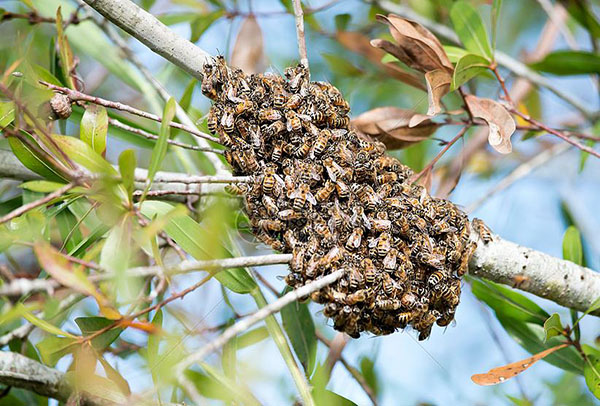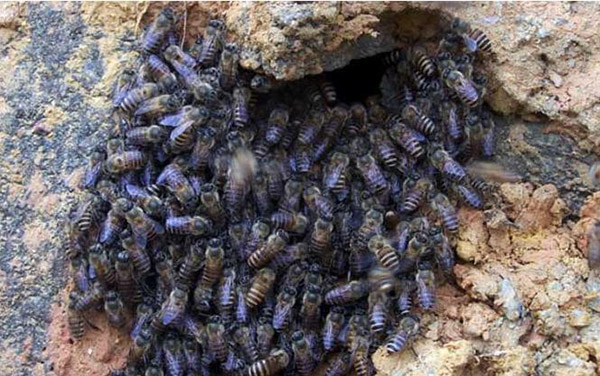How do you know if there is a wild bee colony nearby?
 Feb 17,2023
Feb 17,2023
 5551
5551
 Lucia Ma
Lucia Ma
The basic condition of beekeeping is at least one group of bees, otherwise there is no way to talk about beekeeping, and the acquisition of bee colonies is either to go to the bee farm to buy, or to collect wild bee colonies by yourself, especially wild bee colonies The most common, let's take a look at how to know if there are wild bee nests nearby!
Observing honey harvesting
Observing the honey-gathering behavior of bees is an effective way to judge whether there are wild bee colonies nearby. If you see bees collecting honey on flowers, it means that there must be bee colonies within a radius of 3 kilometers (the collection radius of bees is about 3 kilometers). Then pay attention to the direction and flight height of the honeybees returning to the nest. The direction of returning to the nest is generally the direction of the honeycomb (bees will fly back to the hive directly after collecting honey), and the lower the flight height, the closer the honeycomb distance is, otherwise the flight height The higher the value, the farther the cellular distance is!

Watching bees collect water
Bees, like other animals, cannot do without water. When the bee colony lacks water, it will go to the water source to collect water. This situation is especially common in the relatively dry summer and autumn, and most of the bee colonies go out to collect water. After harvesting water, they will fly straight back to the hive. Therefore, observing the behavior of bees collecting water is the most effective way to find honeycombs. The hive can be found within 500 meters in the direction!
Watching bee droppings
Bees live entirely on flowers (including pollen and nectar, etc.), and bees, like other animals, also excrete waste (the excrement of bees is related to food, and the color is mostly light yellow, yellow, dark yellow, etc.), so searching for wild bees When swarming, pay attention to whether there is bee excrement nearby. In addition, the denser the excrement of bees, the closer the hive is, especially when the sun shines on the hive, the bees will leave the nest to excrete in large quantities. At this time, it is easy to find The specific location of the hive!

listen to the bee
When bees fly, they will make a "buzzing" sound (the sound of a bee is not caused by the flapping of the wings, but from the sound made when the tympanic membrane at the base of the wings beats up and down), especially near the hive. It is very dense, but many bees will also make a dense "buzzing" sound when collecting honey on a honey source, so if there are no bees collecting honey nearby but the "humming" sound is very dense, it means that there must be a bee nest nearby. It is easy to find the direction of the sound!
Summary: The living habits of bees are the theoretical basis for searching for wild bee colonies. For example, according to the habit of collecting honey, the hive can be limited to within 3 kilometers, and according to the habit of collecting water, the range can be reduced to about 500 meters. Reduce the hive range to 50 meters!




 Tel:
Tel:

 Home
Home Where can I buy beehive for beekeeping?
Where can I buy beehive for beekeeping?  You May Also Like
You May Also Like







 Tel
Tel
 Email
Email
 Address
Address







